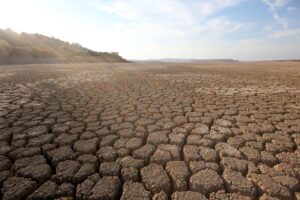Environmental Justice – Climate Change and Racism


The Energy and Environment Department stands in solidarity with the Black Lives Matter movement. This article is a starting point for understanding the links between environmental issues and racism, and why calls to end climate change (and other environmental issues) should come with calls to end racism.
Black, indigenous and people of colour (BIPOC) are the least responsible for environmental harm, especially climate change, on a global scale. Whilst China may be currently be the largest polluter, for decades the majority of pollution came from Europe and North America cumulatively these regions are the biggest contributors. One of the principles of environmentalism is that the polluter pays. By this logic, the brunt of the cost of climate change should be born by Europe and North America. This is not the case.
Environmental harm is more severe for BIPOC at a global scale. In the UK, climate change is largely a problem for the future. In the Global South, the consequences are happening now. Sub-Saharan Africa, for example, is considered to be one of the worst affected areas, being especially susceptible to drought and heat stress. This is related to geography, the UK’s temperate climate and location away from key storm tracts, means climate change will not have significant consequences for many years. It is also related to the complex social explanations for the distribution of wealth and the ability to influence change across the region and indeed the world.

Environmental harm often is more severe for BIPOC on a local scale. This manifests in the tendency for toxic facilities to be located near majority Black communities, London’s Black communities are disproportionately exposed to air pollution and race is the biggest indicator in the US of whether you live near toxic waste. It is present in findings that a higher percentage of BME people live in areas of greatest deficiency of access to open green spaces with wildlife value. And the decision to move the Dakota Access Pipeline away from the majority white town of Bismarck following complaints, yet continue to pass through the Standing Rock Sioux tribe land, putting sacred sites and water at risk.
The Environmental Movement is not without fault when it comes to racial justice. Here are a couple of examples to demonstrate this:
In short, this means that environmental issues are intersectional problems, they are related to multiple forms of discrimination in society including race, as discussed, but also relating to gender or sexuality for example.
So, what does this mean for environmental work at the Trust? Good question. Well, you might have already noticed some links to justice in our work to date, such as linking the Green Impact objectives to the United Nations Sustainable Development Goals and we try hard to make sure the organisations we promote align with our values. As a team we are going to be more active in relation to environmental justice and plan to include more articles like this one to inform both ourselves and our champions.
Sustainability is about the environment, but it is also about economy and society, so as we work towards sustainable healthcare, all these factors must be considered.
There are lots of links in this article but here are a couple more…
• The Trust’s statement on Black lives Matter
• Climate Justice Webinar – from a medical perspective in Canada